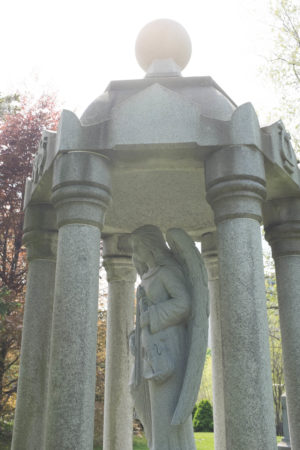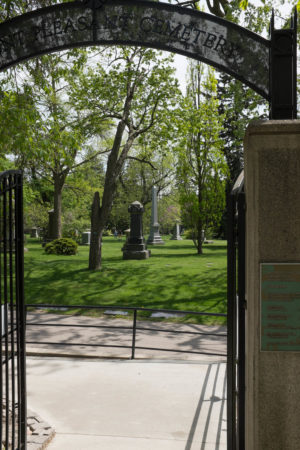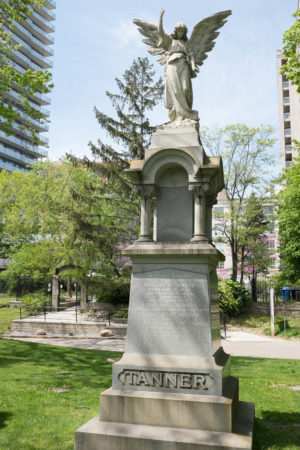Author: Milan
Celtic cross on grave marker
Massey College murder game drama
Every year, many participated in organized sports (volleyball, basketball, hockey) and got involved in squash ladders and ping-pong tournaments. There were laser tag evenings. But the sport that engaged most of the college for the better part of a week each year was, of course, the Murder Game. As [Michael] McGillion observed, it was “always a huge stirring up of your life. If you take it very seriously at Massey, your life stops, really. Your studies are halted. People are in rooms with maps and positioning systems. We had alarms set up. It was ridiculous how seriously we took it.” In the course of one game he recalls an episode “involving the master and Matthew Sullivan, who was in law, a Buddhist, an interesting character, and very quirky. I was his victim and the master was my victim. I saw the master as he bolted and went after him. Matthew went after me. And we had this chase, which must have gone on for half an hour, up and down the stairs of all the houses. The master can move. He’s very quick. He’s hard to catch.” [John] Fraser himself recounted another memorable moment that concerned Daniel Bader (JF, 1998–2000, 2004–5), theology student and successful killer. A devout Catholic who regularly spent time in the Newman Chapel, he was indignant to find himself “killed from behind” while “on his knees” there. Afterwards, he and another junior fellow (a fundamentalist Protestant) expressed their concern to Fraser about this “outrage to religion.” The master probably did not help matters when he responded: “Well, there is precedent. There was an archbishop killed in the Church of England.”
Grant, Judith Skelton. A Meeting of Minds: The Massey College Story. University of Toronto Press, 2015. p. 546–7
Previously:
The Massey College Rule of Courtesy
One of the items discussed each September when the don and committee chairs elected the previous April explained the college’s various structures and committees to the incoming group is the Rule of Courtesy. This rule, which has governed college behaviour since Robertson Davies’s day, essentially restates the Golden Rule. Here’s how it was explained on 17 September 1998: “[We] only ask that you be courteous, to think of how your actions may affect others with whom you live. [We] get a lot of mileage out of our one rule. [It] includes: not blaring loud music from your rooms, screaming across the quad (especially at night), cleaning up after yourself in the kitchen and bathrooms, not eating others’ food or using their laundry detergent, responding promptly to invitations. [It] also comes into play tonight: listen to those who have the floor, respect the opinions of others. Also included in the rule of courtesy is respect for the diversity of our community.” Breaches of the Rule of Courtesy — particularly in regard to hot plates [meals set aside in the JF fridge for Junior Fellows who cannot attend meals because of academic or other commitments] — were frequently under discussion at house committee and JCR meetings during John Fraser’s first term.
Grant, Judith Skelton. A Meeting of Minds: The Massey College Story. University of Toronto Press, 2015. p. 536–7
Note: Aside from my explanation of hot plates, the square brackets are in Grant’s text.
Variety of cemetery trees
DeSilva and Harvey-Sànchez divestment podcast series complete
The fifth and final episode in Amanda Harvey-Sànchez and Julia DeSilva’s series on the University of Toronto fossil fuel divestment campaign, successively organized by Toronto350.org, UofT 350.org, and then the Leap Manifesto and Divestment & Beyond groups.
The episode brings back guests from each prior era, and includes some interesting reflections on what organizers from different eras felt they learned, the value of protest as an empowerment space and venue for inter-activist networking, the origins of the Leap Manifesto group in the aftermath of the 2016 rejection, as well as how they explain President Gertler’s decision to reverse himself and divest five years after he rejected the Toronto350.org campus fossil fuel divestment campaign.
Threads on previous episodes:
- Intro: Podcast series on fossil fuel divestment at the University of Toronto
- Episode 1: Podcast episode about the early U of T fossil fuel divestment campaign
- Episode 2: New podcast on the U of T divestment campaign from 2014 to 2016
- Episode 3: Available on Spotify
- Episode 4: Divestment generation podcast 4
Cemetery angel
Mount Pleasant Cemetery gate
Can a machine with no understanding be right, even when it happens to be correct?
We are using a lot of problematic and imprecise language where it comes to AI that writes, which is worsening our deep psychological tendency to assume that anything that shows glimmers of human-like traits ought to be imagined with a complex internal life and human-like thoughts, intentions, and behaviours.
We talk about ChatGPT and other large language models (LLMs) “being right” and “making mistakes” and “hallucinating things”.
The point I would raise is — if you have a system that sometimes gives correct answers, is it ever actually correct? Or does it just happen to give correct information in some cases, even though it has no ability to tell truth from falsehood, and even though it will just be random where it happens to be correct?
If you use a random number generator to pick a number from 1–10, and then ask that program over and over “What is 2+2?” you will eventually get a “4”. Is the 4 correct?
What is you have a program that always outputs “4” no matter what you ask it. Is it “correct” when you ask “What is 2+2?” and incorrect when you ask “What is 1+2?”?
Perhaps one way to lessen our collective confusion is to stick to AI-specific language. AI doesn’t write, get things correct, or make mistakes. It is a stochastic parrot with a huge reservoir of mostly garbage information from the internet, and it mindlessly uses known statistical associations between different language fragments to predict what ought to come next when parroting out some new text at random.
If you don’t like the idea that what you get from LLMs will be a mishmash of the internet’s collective wisdom and delusion, presided over by an utterly unintelligent word statistic expert, then you ought to be cautious about letting LLMs do your thinking for you, either as a writer or a reader.






